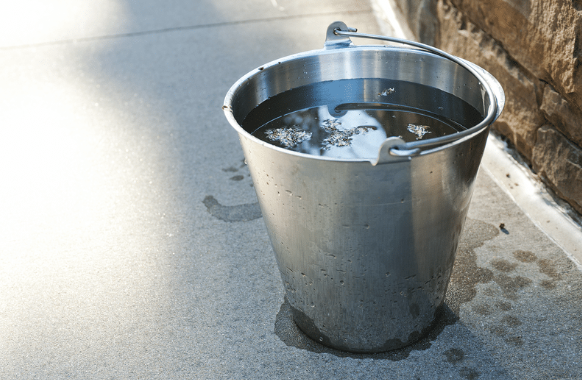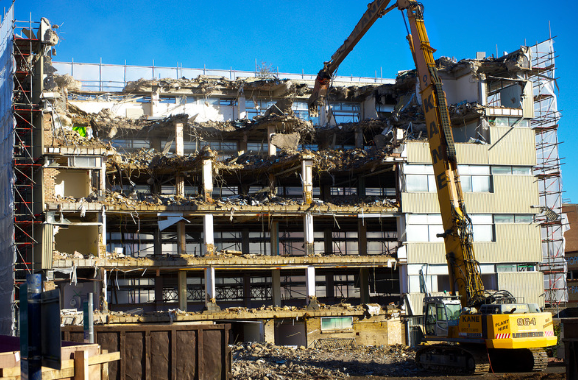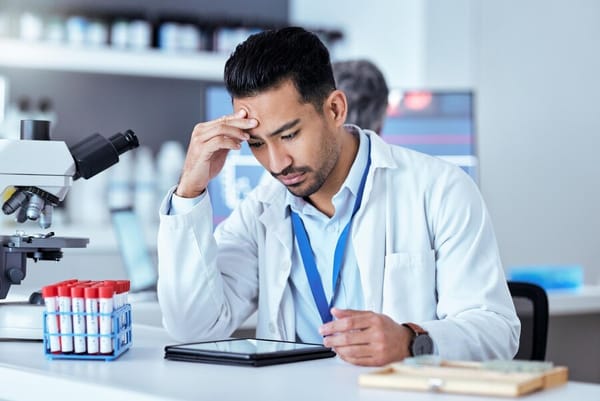What You Don’t See Can Hurt You

Galenisys Newsletter : July 2025
Table of Contents
By Tony Dunford
Editor
-
TALES FROM FARAWAY PHARMA
Part 1 Dress Code Ecuador.
By Steve Biddulph -
COMBATING FAKE MEDICINE
By Richard van Duyse -
OUT OF TOUCH, OUT OF POCKET!
“If you want to influence events, be there”
By The Editor
TALES FROM FARAWAY PHARMA

By Steve Biddulph
Fellow of Royal Society of Biology. Board level pharma experience. QSM and Aseptic Manufacturing & Control Expertise. Galenisys Managing Director.
Part 1 Dress Code Ecuador.
(the 1st of a series of experiences & lessons Steve has accumulated over the decades – The Editor)
The company that I worked for told me: “so you are now in charge of Quality for the Americas!"
As a result, I needed to know from the respective business units how many sites, CMOs and licence holders there were. “Quite a few” was the usual (but unclear) reply.
However, we did have well-staffed business units in all of the different countries so off I went to visit them. Each one of them had well-kept records and contracts with CMOs that they used in their region and, sometimes, there was one of our own sites.
For the visit to Ecuador, I landed in Quito and made may way to the local company HQ. There the CEO and his staff provided a good overview of the companies to whom they had given contracts and who currently manufactured our products. Manufacturing seemed to be centred around the city of Guayaquil on the pacific coast and the jumping off point for the Galapagos Islands.
Dates for audit visits were made and off I went in a WW11 era DC4 to Guayaquil.
After a pleasant night in the hotel, I set off for the first CMO. The road I was walking along, was a dirt track, very rutted and with mud and pools of water from the daily tropical rainstorms. I saw a large building at the end of the road with a red vehicle in front of it. Unbelievably – it was a Ferrari (how can you drive a Ferrari on those kind of roads?)
On the ground floor the receptionist ushered me to the lift that went to the 5th floor and the CEO's office. The lift exited directly into his breathtakingly large office. After introductions & small talk, “Pablo” was told to show me around.
We reached the 4th floor intending to review liquid product manufacture. The manufacturing suite was “closed”, and I was told that I couldn’t enter since they did not have any spare protective clothing!
Just as I was asking if we could look through a window somewhere, the door opened, and a man dressed in only shorts and wellington boots came out of the area.
“Would you like me to undress to enter?” I asked an embarrassed Pablo. He then led me into the room in which all of the water pipes in the room were broken and leaking water onto the floor. The plaster on the walls was covered in black fungal colonies. Bare damp electric cable ran over the floor. Water poured through cracks in the floor to the floor below packaging was taking place (admittedly with many buckets and bowls to catch the water from above).

And our product was actually being manufactured in the room!
Worst still there was no cover on the bulk vessel, with a full range local insects was swimming or drowning on the surface. Inevitably my short audit led to contract cancellation.
Happily, I have never again seen anything as bad as this facility!
Steve Biddulph
COMBATING FAKE MEDICINE

By Richard van Duyse
Experienced international vaccine industry consultant. Specialized in project & operational management, facility design, start-ups, & technology transfers. Bachelor of Applied Science (B.Sc.).
The Illegal circuit of medicines; and the response of the pharma industry.
Fake, dangerous and illegal medicines are sold in a variety of ways, ranging from the street trader in West Africa selling fake, diluted or single capsules of antibiotics, to the large online industry, which has grown up in recent years; to the rogue pharmaceutical company Purdue Pharma who hid the massive addiction risk of Oxycontin from US doctors & patients, resulting in tens of thousands of deaths in USA.
Theft, prescription abuse, & “doctor shopping" are also to blame.

Common examples of illegally obtained medicines are:
Painkillers (such as oxycodone, fentanyl); benzodiazepines (such as diazepam, alprazolam); ADHD medications (such as Ritalin or Adderall); antibiotics (for self-medication); any kind of anabolic steroids (for athletic performance)
In general the serious dangers of illegal use of such “drugs” are incorrect dosage; contamination, counterfeit medication; addiction and side effects; and no medical surveillance or follow-up.
Such scams subsequent publicity creates doubts & mistrust for patients using legitimate medicine from the pharma industry.
To counteract the illegal trade, the Regulatory Agencies have implemented legislation, and combined with the responsible Pharmaceutical Industry to implement the system known as “serialisation” and “track and trace”.
In the EU, the Falsified Medicines Directive (FMD) made serialization mandatory in 2019
In the US, the Drug Supply Chain Security Act (DSCSA) applies.
Serialization and track-and-trace of medicines aims to:
-
prevent counterfeiting:
-
Inform patients (via packaging) on safe intake and legitimate distribution channels
-
& limit overproduction to prevent surpluses leaking to the black market.

How does Serialization and track and trace work?
Each individual pack of a medicine is given a unique code (such as a 2D barcode or QR code). This unique code includes the product code (GTIN); serial number; batch number; & expiry date. This information is registered in a database (such as the EU Hub in Europe) and can be checked upon delivery to the patient.
Here's an example,
-
A box of blood pressure medication is given a unique code when packaged by the manufacturer.
-
That code is scanned by the distributor, & wholesaler at delivery to pharmacy, & at delivery to patient (when the code is deactivated).
-
If someone tries to use the same code again later, the system sees that it has already been deactivated indicating a possible counterfeit.
As well as being a legal obligation this full digital trail of every box of the medicine means:
-
It’s almost impossible to introduce counterfeit medicines into the legal chain unnoticed.
-
The pharmacy can check whether a package is genuine and has not been delivered before.
-
leaks from the legal distribution chain are visible (medicines ending up in the illegal market).
-
Recalls are facilitated - specific batches quickly traced and removed from the market.
-
Transparency and efficiency
-
Better inventory management in pharmacies and hospitals with less waste and loss.
-
Increased patient confidence that their medicine is safe and authentic
OUT OF TOUCH, OUT OF POCKET!
*By The Editor *
Years ago, a senior director gave me one of the best pieces of advice I've ever had: “If you want to influence events, be there” he said.
OK, this was before the Internet age. However, I'm sure it's still sound advice. It stresses the necessity of understanding context & keeping in touch with key people.
Otherwise, things can go very wrong (as Steve’s article in this edition is illustrated).
In the Netherlands, I was called in to help a subsidiary of a British packaging company, which had received a large and potentially lucrative contract from a major European pharma player. My client already had the necessary technology to undertake the manufacturing, but what it didn't have was a pharmaceutical & GMP aware workforce, a QA department, or System, plus it needed a Manufacturing Licence.
The company was not too large and I was able to run basic GMP training for the unit’s workforce, recruit a QA Manager & arrange visits to pharma facilities for department heads to illustrate key GMP aspects.
However, 2 large issues loomed: firstly, it became clear that it would not be possible to implement plant layout changes without long shutdowns. And secondly, the equipment envisaged for both pharma and non-pharma products could not effectively be (“pharma”) cleaned between production runs.
As a result, we undertook a study and project proposal. When the capital required was presented to senior management, it wasn’t viable because of the contracted product price with the client.
It transpired that the marketing director of this would be CMO, had met a senior figure in the multinational company, and concluded a binding priced contract without the full awareness of the implications, or of the involvement of the Site Director or Executives.
The company was obliged to break the contract with financial and reputational cost; & the marketing director didn't keep his job.
Earlier during my time as Director General of a pharma manufacturer which had in house business & a CMO business, our (Multi Card) Commercial Rep. would attend each of our monthly commercial meetings with Production & QA to discuss existing and future manufacturing of our own and clients’ products. On one of these occasions, he turned up with the possibility of a contract (from a company who had never visited us) for approximately 12 million freeze dried vials (roughly the size of our existing full capacity of which he was well aware).
Clearly, it was of potential interest; & clearly, we would need capital investment, & facility modification, to accommodate additional freeze driers etc.

You can imagine our surprise when roughly a month later the rep told a meeting that the potential client was demolishing his existing facility on the assumption that we would be able to take on the business.
So here we are again. A guy who hasn't taken the trouble to “be there” & understand the implication of radical actions, or keep others informed.
The Editor
A GOOD READ FOR THE HOLIDAYS
In contrast to “TALES FROM FARAWAY PHARMA”, a great book to put in your case is “THE PLACES IN BETWEEN” By Rory Stewart. It will take you completely away from pharma and is an extreme example of visiting to know how things are.
The Editor





